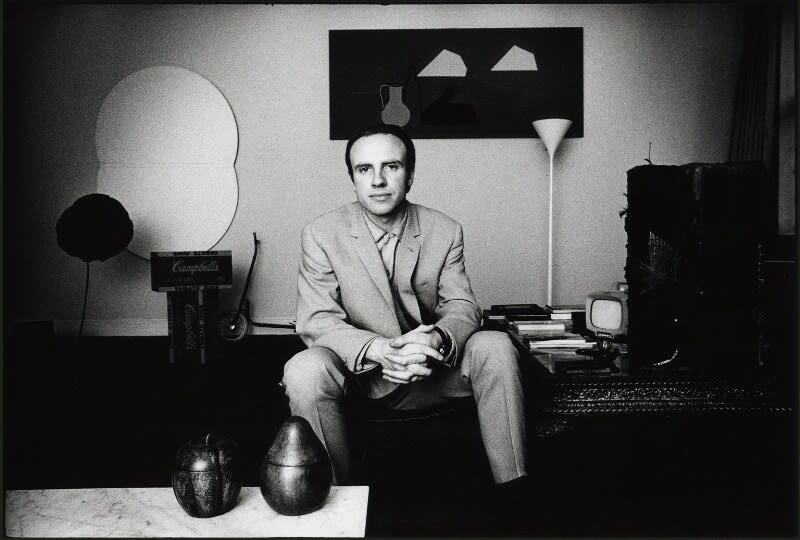"One's always been taught in art school that all relationships and colours should blend, affected by one light. But that can make for very dull painting. Does nature blend? I think that people have no difficulty in blending everything together."
-Patrick Caulfield
Career
From the mid-1970s, Caulfield incorporated more detailed, realistic elements into his work; After Lunch (1975) is an early example. Still-life: Autumn Fashion (1978) contains a variety of styles – some objects have heavy black outlines and flat colour, but a bowl of oysters is depicted more realistically and other areas are executed with looser brushwork. Caulfield's paintings are figurative, often portraying a few simple objects in an interior. Typically, he used flat areas of simple colour surrounded by black outlines. Some of his works are dominated by a single hue. In 1987, Caulfield was nominated for the Turner Prize for his show The Artist's Eye at the National Gallery in London. In 1996 he was made a CBE.
Later in his career, Caulfield worked on several commissions in addition to his painting and printmaking. In 1990 he designed a stained glass window for The Ivy restaurant, it is visible from within the restaurant and on its exterior. In 1992 he designed a 12-metre carpet for the British Council's Manchester headquarters and in 1984 and 1995 set designs for Party Game and Rhapsody (respectively) at the Royal Opera House. Caulfield painted the doors of the Great West Organ at Portsmouth Cathedral in 2001.
